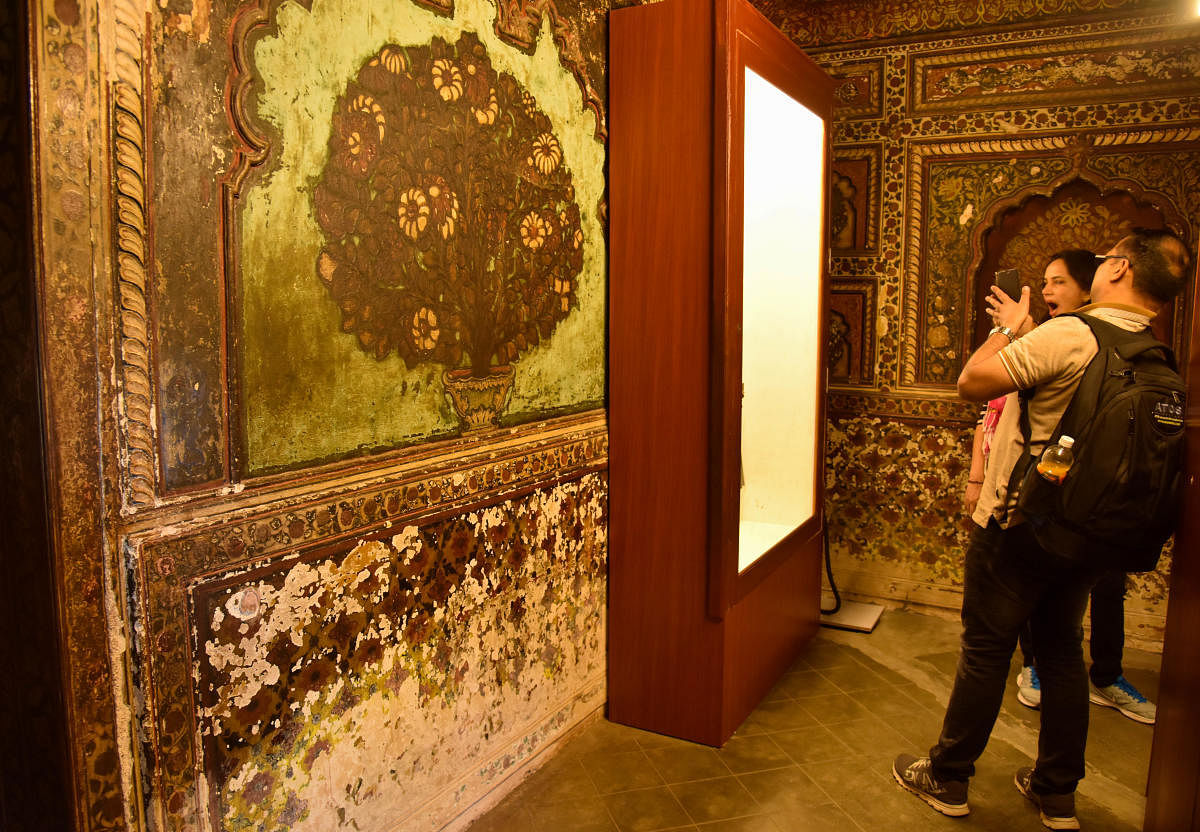
As tourists flocked in droves on Friday afternoon, the dusty, broken frescoes in Mysore painting style gave an ugly look to the walls, pillars, canopies and arches of the palace. The only sign of restoration by the Archeological Society of India (ASI) was a small stretch of the palace's outer wall, subjected to chemical treatment.
But the inner walls, replete with scrolls of thin foliage and floral patterns are in total disarray. Years of apparent neglect has completely erased the paintings from the lower half of the walls, now beyond repair. As an English tourist Steven Sinnhuber remarked, “This place looks run down. It has massive tourist potential, but these paintings should have been better preserved.”
The entire Daria Daulat Bagh complex is maintained by the ASI. But the partial restoration work was launched only a year ago, as an ASI official told DH. “We cannot do the conservation work overnight. It needs time and patience,” was his rationale.
A reality check by DH on Friday showed just why the restoration work could be too late, too little. Local officials admitted that there was no way the old paintings could be brought back to life as parts of them had vanished without a trace. Tell-tale signs of decay were everywhere.
What next? Conservationists say the only way to save the Palace is to hand over its restoration to institutions such as the Aga Khan Foundation, the World Heritage Fund or the United Nations Educational, Scientific and Cultural Organization (Unesco).
“The Foundation, for instance, had totally transformed the Humayun's Tomb complex in Delhi. The government, instead of focussing on the Jayanthi, should be bothering about restoration through such partnerships,” said Mansoor Ali, a Bengaluru-based architect and active campaigner for heritage conservation.
The upper storey of the Palace is now a complete no-go zone for tourists. ASI officials indicated that the Indo-Islamic style structure, built by Tipu in 1784, had weakened and will not bear the heavy load. The palace is built mostly of teakwood, with four staircases positioned inconspicuously.
The entire structure could collapse if restoration work does not pick up the pace, warned Ali. “Heavy rains would further weaken it. An easy way would be to build a tent-like structure above it to prevent it from collapse while continuing with the restoration.”
But at the site, a sense of urgency was clearly missing. For Dr Kamlesh Tulsidas Merchant, a tourist, this was just not the way to go. He said, “This is a historical heritage of India. It has to be restored and preserved for generations to come.”
ALSO READ: Palace best of Tipu monuments in Bengaluru
Srirangapatna, where history comes alive
‘On doc’s advice’, CM HDK to skip Tipu Jayanti event